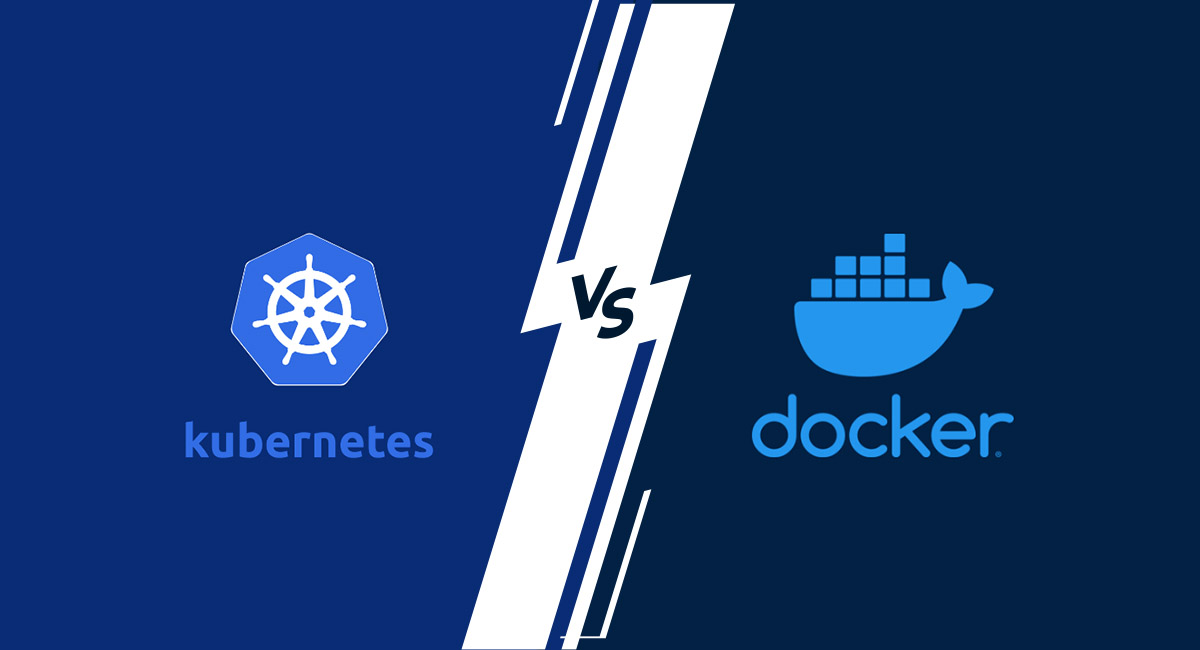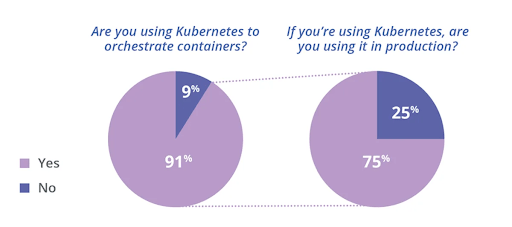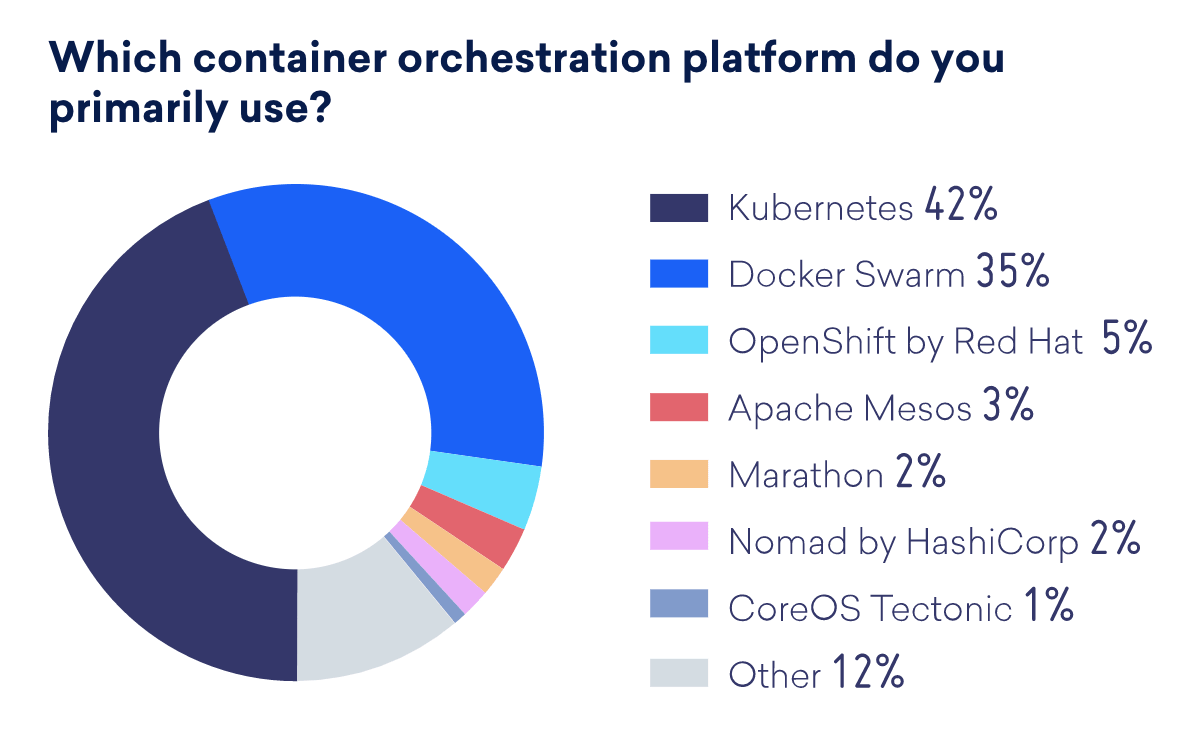Kubernetes vs Docker – Clarifying Differences Between Two Technologies

The world is constantly changing, and so are modern technology tools. It seems like there is so much happening in the software development world, from application building to readymade frameworks to third-party APIs; developers need to keep pace with all emerging trends to deliver an excellent user experience. Kubernetes and Docker are also trending technologies, but many people wonder what is the similarity between them and what to choose? Don’t worry, let’s resolve this issue, here we will clarify the difference between Kubernetes vs Docker and which one to choose for your next project.
[toc]
Today, DevOps is the “hot topic” in software development, but many programmers still do not know its real meaning. In simple terms, DevOps is an operational culture that aims at continuous development and quick IT service delivery by establishing better communication and collaboration between developers and operators.

Source: (Allied Market Research)
No matter how experienced a developer you are, catching up with emerging technologies has become more important than ever for software companies. As per the research conducted by Glassdoor, the average pay scale of DevOps engineers is all set to reach $150,000, so it has become inevitable for them to brush up their skills with time and technology.
Now you must be thinking both the technologies look similar as both allow developers to package applications into containers to perform them well in diverse environments. So what makes them different? Are there any pros and cons? Don’t brainstorm too much; in this article, we will give you an insight into both technologies and discuss similarities and differences so that you can choose the best without any skepticism in mind.
What is Kubernetes?

Source: (StackRox)
Kubernetes, aka K8s, is one of the popular container orchestration software launched by Google in 2014 and is now managed by the Cloud Native Computing Foundation. Kubernetes is an open-source tool and used to automate several processes in applications:
- App deployment
- Scale infrastructure
- Management
Kubernetes has become popular, and credit goes to its robust functionality. Right now, Kubernetes is one of the most widely used containerization tools and backed by a large community of developers, contributors, and cloud providers. Here are the amazing features of Kubernetes.
Features of Kubernetes
- Automates manual process
- Offers top-notch security, manage containers and storage
- It continually checks the health of nodes
- Deploy and update software quickly
- Automatic rollouts and rollbacks
The main motto of designing Kubernetes is to simplify workload scalability using containers. It has become even more essential when developers want to define how applications should run and interact with each other.
What is Docker Swarm?
The adoption of Docker is still growing exponentially, and more and more companies have started using it for quick development and deployment of applications. Docker Swarm is also an open-source tool that has been launched to create applications as a small container on any machine. If you get started with docker development, application deployment has become so easy for developers.
Docker was first introduced in 2013 by Docker, Inc. Today; Docker is the most popular container platform as more than 25% of companies use it for their projects.
Features of Docker
- Decentralized access
- High security
- High scalability
- Version control
- Enhance developer’s productivity
From the above definitions and features, it seems that both technologies perform the same task, but some differences set apart both platforms. It is important to use an orchestration platform to scale and manage your containers. Let’s picturise a real-life situation.
Imagine a situation where you have been using Docker for some time and have deployed it on several servers. Now your application starts getting massive traffic, and you need to upscale it as soon as possible; how will you go from 3 servers to 40 servers? And how will you decide which container goes where? How would you monitor all these containers and make sure that they are restarted if they exit?
This is where Kubernetes comes to the rescue. Anyways, it was a normal example; now, let’s differentiate both platforms and the pros and cons of both technologies.
Kubernetes vs Docker: The Major Showdown

Source: ( Up Cloud)
We have gone through the features and definitions of both technologies; both are quite popular tools in the software industry. But we all know every coin has two different sides; in the same way, these two tools shine differently. So without any delay, here’s the major breakdown of two popular tools Kubernetes and Docker Swarm.
Basic Concept
Kubernetes uses pods which are composed of one or multiple containers that are located on the host machines and shared resources, whereas Docker Swarm uses clusters that are a group of machines running Docker that are joined together.
Installation
Setting up Kubernetes is much more complicated as you have to perform several steps. Probably this is the reason why it is able to handle more complex deployments. While installing the Docker swarm is quick and simple, all you need to do is follow two commands to get started.
Winner: Well, it depends on your project requirements. If you are looking for small and simple infrastructure, Docker could be the best solution. While if you are searching for growth and the ability to handle extremely difficult projects, Kubernetes is the ultimate way to go.
Graphical User Interface (GUI)
Kubernetes comes with an in-built GUI that allows you to deploy applications quickly as well as view and manage cluster status. While Docker Swarm does not offer a Graphical User Interface (GUI), it offers some third-party tools to ease the process.
Winner: Kubernetes
Load Balancing
As we know, Kubernetes is well-known for managing difficult projects and systems; it follows the manual process of load balancing with the different nodes. Whereas Docker Swarm offers automated and in-built load balancing.
Winner: Docker Swarm
Scalability
Actually, both tools are amazing to use when you want to scale your infrastructure, but Kubernetes automatically adjusts based on traffic, while in Docker Swarm, one needs to perform all tasks manually.
Winner: Again, it’s based on your requirements; if you are looking for automatic options, Kubernetes could be the best choice while Here’s a deep diver about horizontal vs vertical scaling aka. scaling up or down is more important to your team, prefer Docker Swarm.
Security
Kubernetes offers premium security controls, including RBAC authorization, secret management, and network policies. Moreover, you can also enhance Kubernetes’do security level with cloud-native tools, while Docker Swarm security usually relies on network-level security via TLS.
Winner: Kubernetes
So these are the major differences between two popular tools, now you must know who the winner is and which tool you should use. After discussing the major differences, let’s analyze the pros and cons of using each technology.
Positives and Negatives of Both Containers
After going through major differences between both containers, if you are still skeptical about what to use from an extensive range of options, here we have come up with the pros and cons of Kubernetes and Docker Swarm. Check out the positives and negatives of both to make the decision process easier.
Pros of Kubernetes
- Popular and trusted open-source platform backed by Google
- Performs well across all operating systems
- Potential to manage complex infrastructure
- Advanced features
- Dedicated support and a large community of users
Cons of Kubernetes
- The installation process is tough and time-consuming
- Requires separate CLI (Command Line Interface) tools
Pros of Docker Swarm
- An open-source platform that works perfectly for all Docker products
- Quick and simple installation
- An ideal choice for fewer complex systems
Cons of Docker Swarm
- Limited functionality
- The future is not promising, just like Kubernetes
Head To Head Differences Between Kubernetes vs Docker
Both Kubernetes and Docker Swarm are open-source tools that work with microservice architecture. Here we have listed down the head-to-head comparison between both tools with different parameters.
| Parameters | Kubernetes | Docker Swarm |
|---|---|---|
| Set-up | Tedious setup and installation process | Requires a couple of commands to set up |
| App deployment | App deployment can be possible using a combination of pods and services | Using Swarm cluster anyone can deploy the app |
| Availability | Higher availability | Offers higher availability |
| Container setup | Offers set up APIs that makes the setup process slow | Deployment of containers in docker is faster |
| Load balancing | Manually load balancing | Automatic load balancing |
| Scalability | It offers a comprehensive framework for different systems | Deploy containers much faster |
| Upgradation | Manually performed | Single click up-gradation through MAC or Windows |
Adopt the One that Ensures a Resilient Future of Development
From the above differences of kubernetes vs docker, we can clearly say that Kubernetes won the race and has become an ace in the container orchestration category, but Docker is a simple solution that can be used for fast development. Both are great options for container orchestration, and both are continually improving their services. Eventually, it all depends on your business needs and project requirements. Choose the best that can meet your business’s intricate demands.
